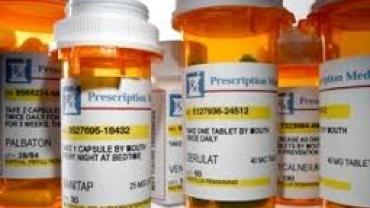
In an interesting epidemiological and sociological shift while illegal drug abuse has declined over the years prescription medication abuse has actually increased significantly along with prescription drug overdose.
With increased internet access easier availability from friends and relatives poor disposal of expired or unused medications inadequate supervision of responsibly prescribed medications (mostly concerning teen and adolescent medication abuse) and a misperception that prescription medications are somehow safer than illegal drugs this trend may be understandable. There is a certain irony however that legally obtained prescription medications may actually be injuring more people than illegal drug use.
Let's focus on teens for a moment. In another interesting statistic while only 1 in 100 parents believe that their child has used study drugs (Ritalin Adderall Ephedrine) according to recent surveys 1 in 8 to 1 in 10 teens have actually used such drugs. Additionally grandparents with their cornucopia of prescription meds that are kept within easy access can add to the potential of teen drug abuse as they are a particularly tempting target for young people.
Unintentional effects
Medication abuse whether conscious or unintended may not be the only problem. Prescribing certain medications to those over 65 years of age for instance can increase the risk of unintentional or undesirable drug effects. The incidence of this occurance happens to a whopping 1 out of 4 elderly patients.
Off-label medication use is the protocol of pharmaceutical drugs for an unapproved and untested indication or in an unapproved age group dosage or form of administration. While certainly not illegal or unethical and indeed doctors have the latitude to prescribe a drug for any reason they deem medically appropriate off-label medication use is not an uncommon practice. This routine procedure however can significantly increase the incidence of preventable serious adverse drug events. For instance atypical antipsychotic medications a group of tranquilizing drugs primarily used for schizophrenia and bipolar depression are commonly used for off-label conditions such as agitation in dementia anxiety and obsessive-compulsive disorder. But their efficacy in off-label uses appears to be mixed at best while increasing the rates of adverse reaction and mortality. Additionally this class of medication when used in children and adolescents increases by three fold the risk of developing diabetes as well as well as weight gain and blood lipid abnormalities.
Over-Diagnosis
Finally the risk of over-diagnosis may also be a source of over-medication especially in pediatric situations. Parent anxiety levels increase the perceived need for some type of pharmacological intervention whether the need is actually warranted or not. In an interesting study in pediatric cases in which a diagnosis of gastroesophageal reflux disease (GERD) may or may not have been accurate simply labeling a child with GERD increased the chances of the parents urging prescription medication use as opposed to a child not being labeled as having GERD. While this may not appear to be an unusual parental reaction the diagnosis may have been given to a perfectly healthy child whose symptoms are nothing more than the response of a developing and finicky digestive system and/or the parental insistence on a drug intervention occurred even after the physician informed the parents that the treatment may not be effective.
For some time now we have been practicing health care in a difficult environment where because of liability issues and practice management regulations routine and at times unwarranted and unquestioned medication recommendations are the standard of care. Based on the above studies perhaps it is time to revisit the essence of the Hippocratic Oath first do no harm.
Michael Fuhrman D.C.